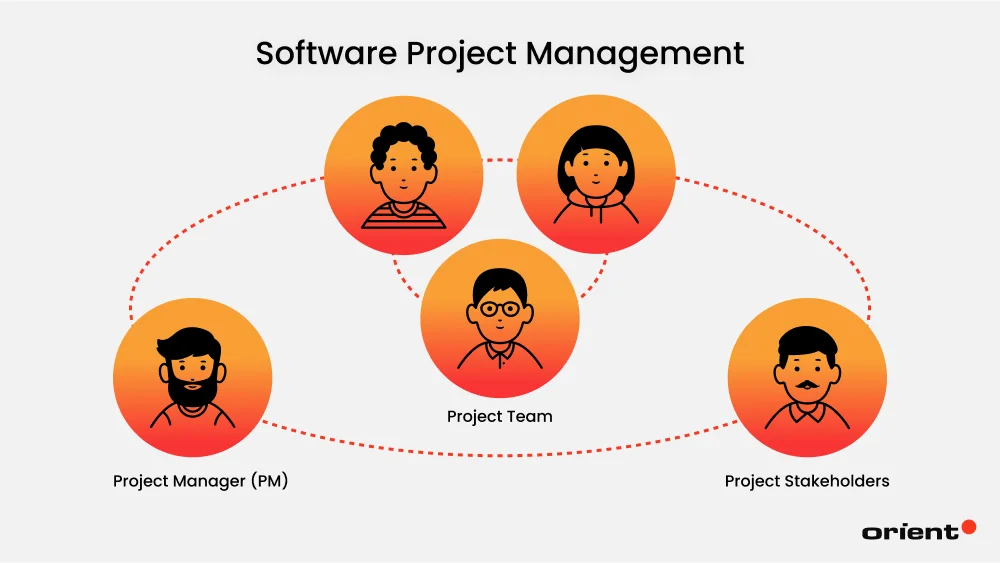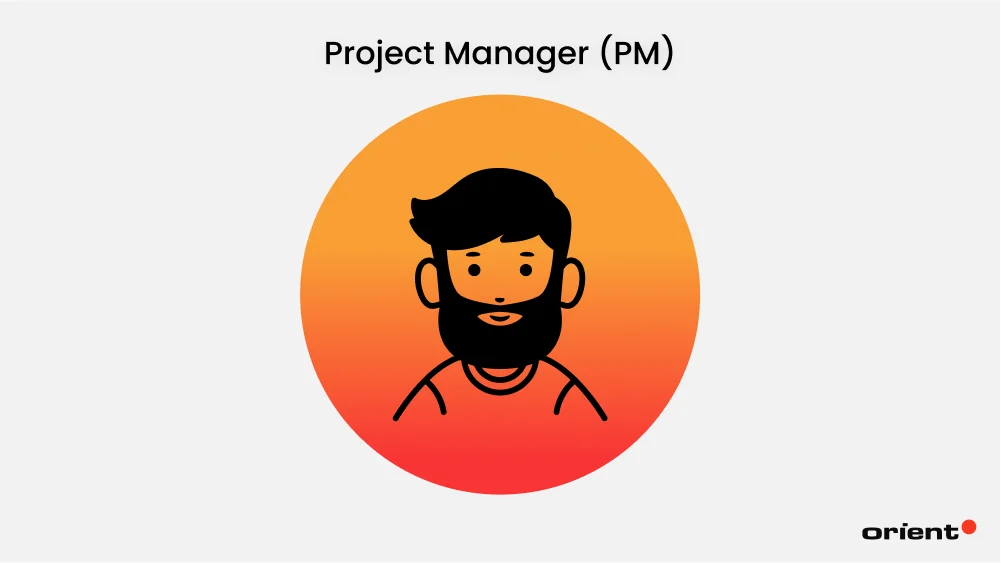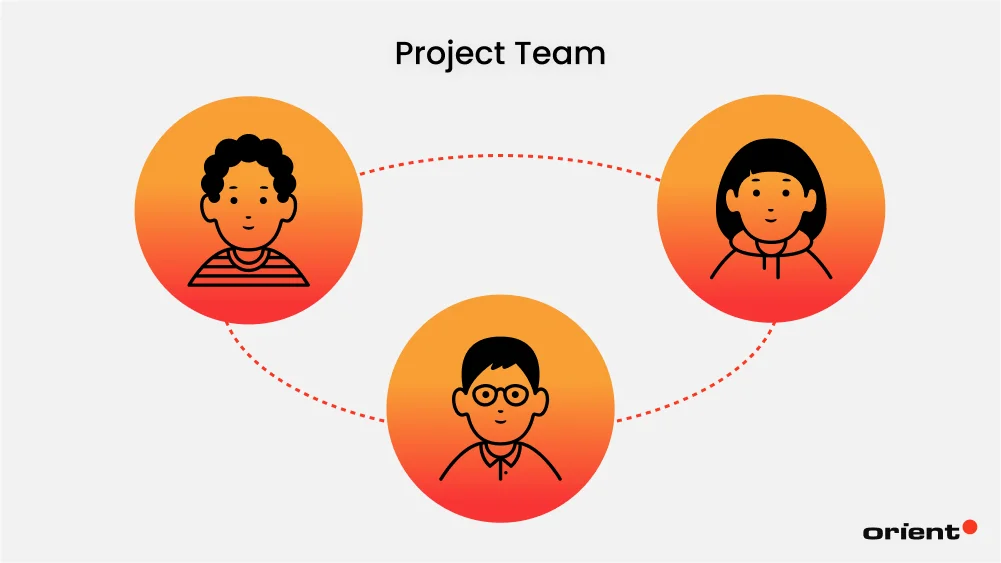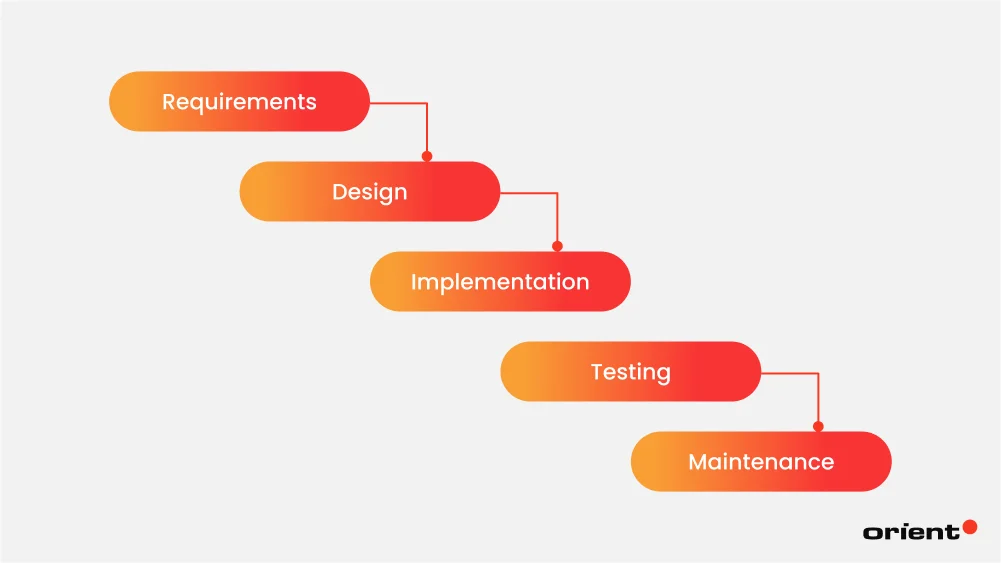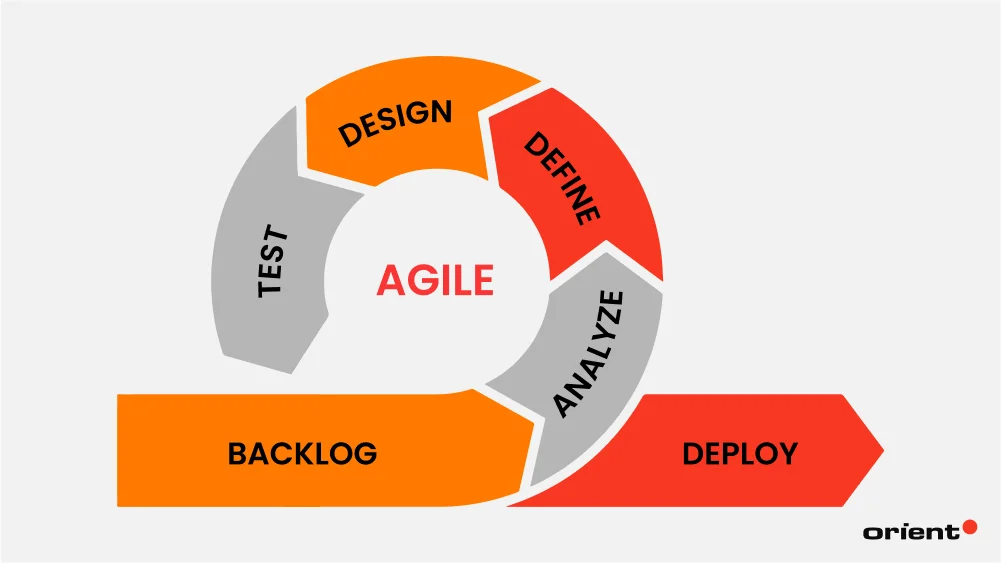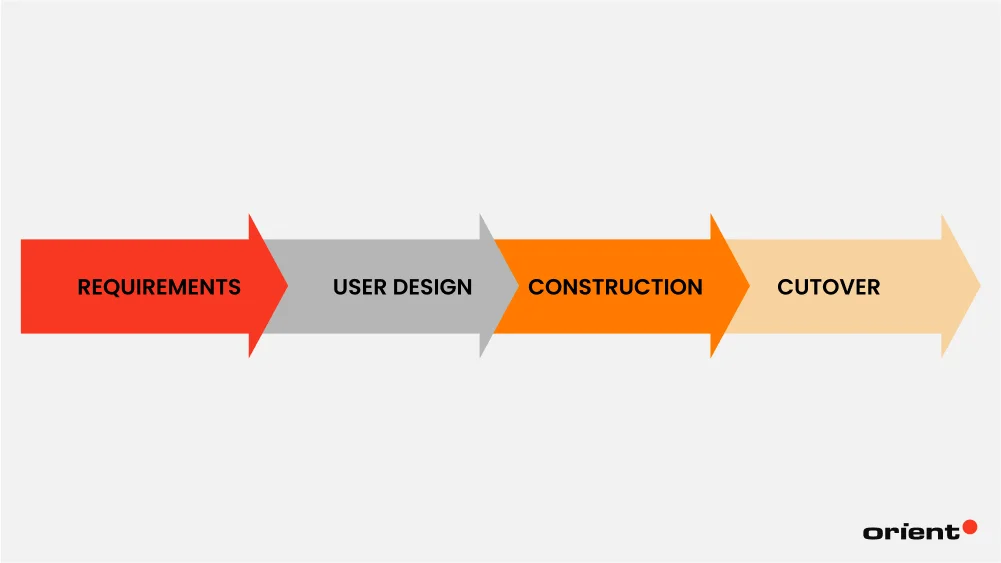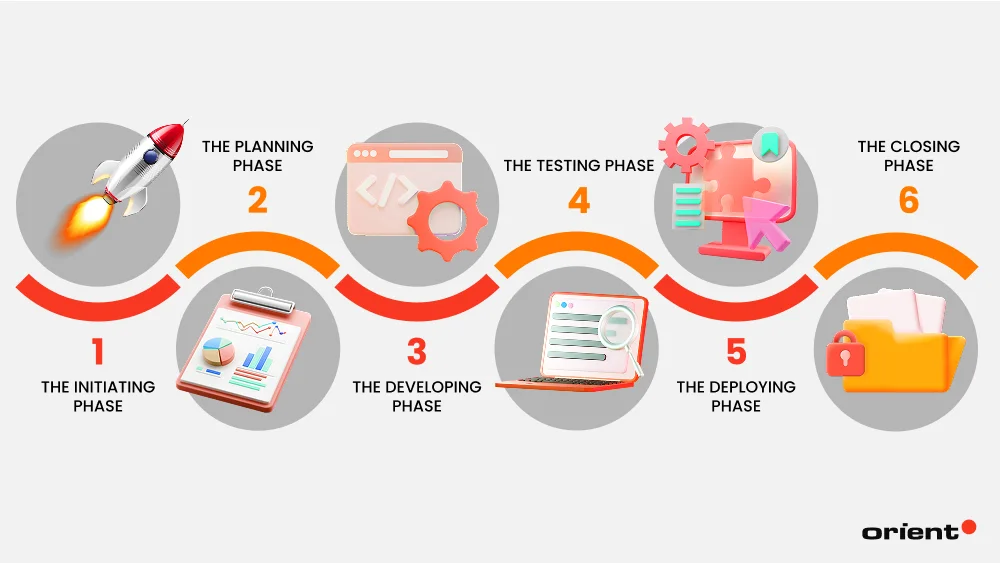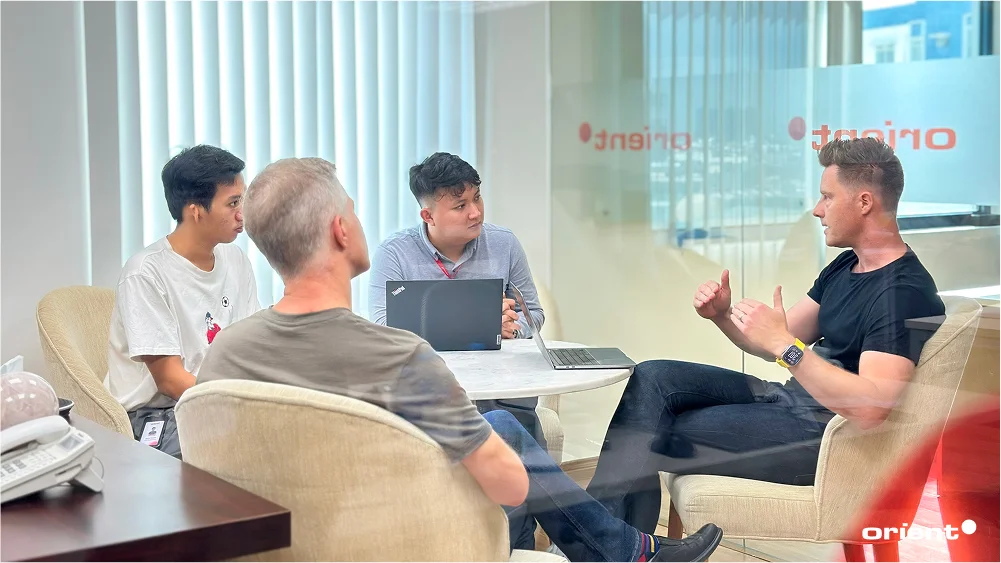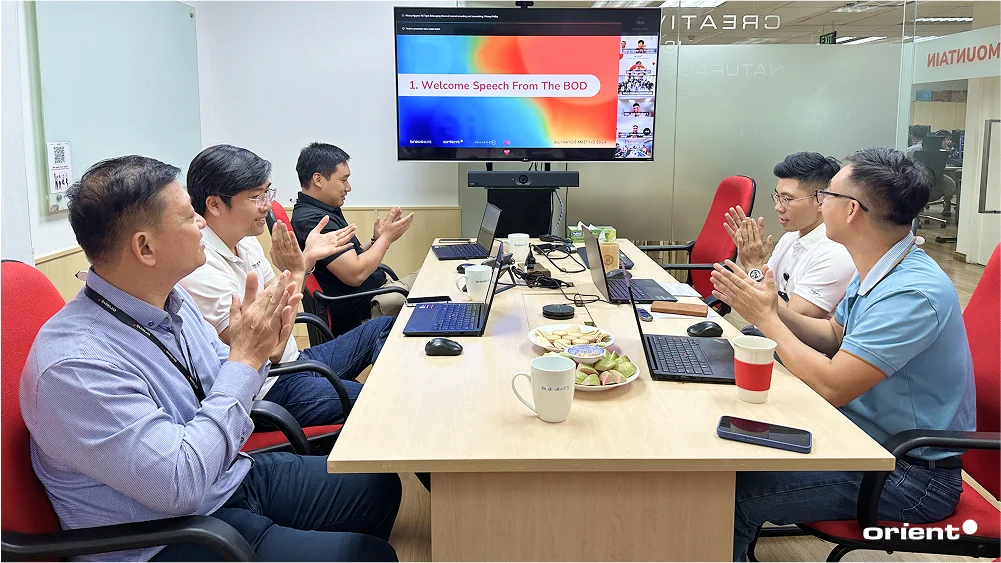Whether you are a startup on the rise or a well-established tech corporation, all agree that software development projects need a level of expertise in order to be implemented and monitored effectively. It is an imperative step in the success of any software development endeavor; without proper project management, there are higher chances of failure. On this page, we will lead you through all the necessary information required to handle project management efficiently in the current IT industry.
Get Started with Software Project Management
The concept of project management was first coined in the 20th century when Henry Gantt invented the Gantt chart – a somewhat project charter developed to illustrate a project schedule as bar charts. Since then, the adoption of project management practices has spanned organizations from across industries, typically information technology (IT).
![Get Started with Software Project Management]()
What Is Project Management for Software Development?
If you prefer terming it software engineering project management, then so be it. As its namesake, project management refers to all the activities involved in the software development process to make certain that it is conducted well toward success, encompassing project planning, scheduling, executing, monitoring, and finally delivering software projects. The mainspring for a project management process is to control the budget, time, and human resources in an optimal manner so that the software development teams can set to work with little or no hassle throughout the entire software development lifecycle (SDLC).
Who Is Involved in Software Project Management?
It goes without saying that the primary role in managing a project and its outcomes is played by a software project manager (PM). Like a conductor in an orchestra, project managers steer the projects in the right direction, and they are accountable for the project performance and progress at each and every phase of the development cycle.
![Who Is Involved in Software Project Management?]()
However, it does not mean other individuals, teams, and departments within the organization have nothing to do with this duty. Otherwise, they are the ones who contribute to the overall result of a project as much as a project manager does. An effective project management endeavor is documented when all are on the same page, work toward common goals, and maintain effective collaboration. Therefore, project managers alone have no way to drive a project to the finish line. They need effective cooperation and contribution of the following:
Project Manager (PM)
![Project Manager (PM)]()
As mentioned earlier, the PM is responsible for leading and organizing the project activities. The PM also monitors progress, identifies and resolves any issues or risks that impede the course of the project, organizes regular meetings with stakeholders to ensure all requirements are met, keeps team morale high, and makes sure each team member is doing their job properly.
Project Team
![Project Team]()
Project development teams are the group of people who do the actual work of developing software products. They include software developers, UI/UX designers, quality analysts, and testers. Software teams should possess the technical know-how to build software as well as be familiar with the project objectives and how they fit into the bigger picture. By doing well in their jobs, these teams make it much easier for project monitoring and overall management.
Project Stakeholders
![Project Stakeholders]()
Stakeholders, in general, are the individuals who have a much or less impact on the project outcomes. They should be essentially included in the loop throughout the whole project and mainly play an integral role in the UAT (User Acceptance Testing) phases. They should be updated on progress and any changes that occur during development so they can adjust their approach accordingly and provide valuable feedback at each phase of the project. This allows stakeholders to have input into the product and make sure it meets customer satisfaction and software-related objectives when deployed.
The Importance of Project Management in Software Development Life Cycle
It is easy to say project management is necessary, important, or indispensable, but in which way?
Alignment of Goals
![Alignment of Goals]()
Throughout the entire SDLC, project management plays a crucial role in each stage and keeps everything from spinning out of control. Although the steering committee - a group of stakeholders who govern a project - must initially have well-defined strategic goals and expectations, project management solutions must be present in place to ensure that the whole project and its results do not deviate from the original objectives. How? Project management brings in the direction of keeping the SDLC running on the right track and toward success as it is supposed to reach. Without proper project management solutions, any software project can become unorganized and prone to mistakes.
Seamless & Consistent Communication
![Seamless & Consistent Communication]()
Project management representatives play the role of a common voice in communication among the stakeholders, the project team, and any external parties involved in the development process. By providing a consistent channel for communication, all parties can stay on the same page and get updates without any trouble or delay. This helps to keep distractions away from the actual working process of software development.
Quality Control
![Quality Control]()
A software project management solution comes into play for this core reason. Quality Control (QC) is also one of its main responsibilities; that is, making sure all deliverables meet the desired quality standards. QC measures are put in place for continuous monitoring of the product being developed as it goes through each phase, from conception to deployment. That includes testing for bugs, ensuring the product meets customer specifications, and verifying that there are no security issues or vulnerabilities. By having these processes in place, it becomes easier to ensure that the product is released in its best form. In addition, project management solutions help ensure on-time task completion.
Risk Mitigation
![Risk Mitigation]()
By breaking down tasks into smaller bundles and scheduling them according to priority, project management helps to reduce the number of unexpected surprises during a company’s workflow. It also provides an advance warning if an action is going wrong, allowing teams to course correct earlier in the process so as to reduce their overall costs, deadlines, and stress levels. This means that any potential risks are identified more quickly, thereby reducing the need for additional resources or emergency actions once potential issues have been identified. Ultimately, this makes the entire process smoother, more efficient, and less prone to costly mistakes or delays.
Project Management Methodologies
Software project management methodology is essentially the body of practices and processes that have been adopted for project development. Broadly speaking, there are three main approaches for software project management – Waterfall, Agile, and RAD. Each methodology has its own set of advantages and disadvantages in terms of cost, time, and predicted outcomes.
Waterfall
![Waterfall]()
This is a traditional project management solution in which the project activities are broken down into linear sequential phases. This method is literally a step-by-step development process starting from planning to executing and deploying. However, this Waterfall model reveals a lot of downfalls when it comes to adapting to the fluctuation in customer requirements or unexpected circumstances. Therefore, it is best suited for simple projects with predetermined requirements that are unlikely to change.
Agile Method
![Agile Method]()
Agile project management is the most commonly used so far. It incorporates the concepts of iterative development, continuous releases/deployment, and flexibility in customer requirements. The characteristics of Agile enable teams to respond quickly to changes and produce rapid results, making this method more suitable for dynamic and complex projects.
There are multiple Agile methods with their own nuances, such as Scrum and Kanban. Remarkably, 97% of companies now utilize Agile methodologies. As the name implies, in Scrum, development teams can quickly break down a big project into small sprints that can be completed within a given timeframe. On the other hand, Kanban eliminates work silos and focuses on the continuous delivery of tasks by maximizing workflow efficiency and visibility.
Rapid Application Development (RAD)
![Rapid Application Development (RAD)]()
RAD is a specialized software development solution that focuses on delivering results in no time. Its main goal is to improve the development speed of software projects by focusing on customer feedback and prototype-driven development. The process involves the reuse of components, rapid prototyping, and user involvement. This methodology is most suitable for projects that require final products to be produced in a set timeline.
The Phases of Project Management
Oftentimes, the project management activities taking place in an SDLC are mainly categorized into the following phrases:
![The Phases of Project Management]()
The Initiating Phase
Also known as project estimation, this is the kickoff phase in which the project scope, duration, and efforts are defined before moving to the planning part. During this process, the stakeholders’ expectations, strategies, and goals must be identified. This is also where project cost estimation and resource allocation are conducted. At the end of this phase, project managers should have specified all estimations required for the project.
The Planning Phase
The second phase will lay out the software development process in detailed clarity, so it will entail different levels of project planning, including:
- Scheduling Project Timeline: At this point, project managers are the ones who set the timeline and milestones for project progress.
- Resource Management: Based on the predetermined estimations of time, cost, and efforts, project managers will also be in charge of allocating resources – both human and non-human – to the software development team’s disposal.
- Staffing: When the team size and requirements are well documented, project managers will proceed to team assembly – finding, hiring, and onboarding the right talent for the project. The development teams can either be in-house or outsourced, depending on the budget and the project goals.
- Task Management: At this stage, tasks are identified and assigned to each project team member and tracked throughout the lifecycle.
- Risk Management: This is an essential part of project management, as it helps identify and mitigate any potential risks that may occur at any stage in the SDLC. Knowing what to expect from the project development process will help software project managers anticipate and plan for contingencies.
The Developing Phase
This is the project execution stage, to be exact. It is divided into two sub-stages: Implementation and development. During the implementation stage, software developers will start coding, using available technologies and tools to bring their vision to life, while in the development stage, they will ensure that the developed code is functioning properly and meets quality standards.
The Testing Phase
At this point, quality assurance engineers will start testing the developed code to ensure that it meets the expected performance and quality standards. This is an integral part of project management, as it ensures that the software product can be released with confidence.
The Deploying Phase
Once the code is tested and all bugs are fixed, it’s time to deploy the software to production. This stage of project management involves taking necessary steps to move the application into a live environment, which may include setting up hosting plans or configuring databases.
The Closing Phase
The final phase in the software development lifecycle is closing the project. This includes documenting the entire process from start to finish and gathering feedback from stakeholders to evaluate the project success. After this is done, all involved parties will receive acknowledgment for their efforts. Support and maintenance will also be put in place to ensure the successful operation of the software.
Useful Tips to Manage Your Projects, Even Complex Ones, Like a Pro
Software project management must be approached technically with a proper strategy, which takes time and effort to plan and execute correctly. These are some tips that the steering committee must be mindful of:
Establish a Strong Foundation
Simply, you need a good start. By good, we mean clear and well-defined foundation.
First and foremost, defining and clarifying the scope as well as objectives well beforehand is a must already. But the goal should be determined in a way that is achievable, measurable, and realistic. Break down your project into smaller goals and objectives that are achievable within reasonable timescales. This will help to ensure the project progresses as planned and no milestone is left behind.
![Establish a Strong Foundation]()
The next big thing that has a great impact on your project’s outcomes is a software development team. More often than not, a solid team of experienced professionals with the right set of skills and attitudes is what makes or breaks a project. Therefore, you will have to handpick each and every team member, starting with the leading roles (e.g., project managers, team leaders, etc.), to make certain that they have the skills and experience that align with your project requirements. Having a strong team in place will help to partially ensure that the project will be finished well. These days, it is more favorable than before to have a solid project team working for your project as you can either hire an in-house team or consider contracting out with an intermediary for a dedicated one faster and more efficiently. Or, you can augment IT staff to strengthen your existing team at your disposal.
If you can exactly secure this practice early, it will be easier for you to manage your projects later.
Effective Communication Practices
Mutual communication and understanding are the keys that can make or break the success of teamwork, especially when it comes to managing software development projects. The lack of communication can create a disconnect between the different parties involved and make the whole process troublesome and tedious. Therefore, it is obvious that you must set up clear and smooth communication channels. At this point, communication tools can be a big aid. This serves your project in multiple ways, from improved coordination between all the team members to reducing the risk and cost of projects caused by miscommunication or lack thereof, especially if you are keeping track of multiple projects at a time.
![Effective Communication Practices]()
Additionally, you must ensure every meeting is purposeful and effective. Face-to-face or online meetings are common ways of direct discussion, which is important in managing project-related tasks. However, ineffective or too-long meetings drain the productivity of participants, disrupt deep work, consume time, and, even worse, cause frustration. So, how can you make sure you and your team members have meetings in the right way? A few pieces of advice you can take to guarantee every meeting produces tangible outcomes.
- Every meeting must have a purpose; do not start one without well-defined purposes.
- Only involve the relevant people to keep your meetings small and focused.
- Keep the duration within an average timeframe when people are still productive enough. Remember, not all meetings require an hour.
- Assign a moderator to ensure the discussions stay on the right track.
Measure Progress & Track Results
![Measure Progress & Track Results]()
Software project management is all about tracking and measuring progress. As the project progresses, you must use the right critical success factors (CSFs) and key performance indicators (KPIs) to measure your team’s performance and also track the results of various tasks/milestones. This will help you figure out any loopholes or weak points in your process. By seeing how well everyone is performing, you can identify any areas that require additional work and optimize time management. This helps keep your team on track and will ensure the completion of all tasks in a timely manner.
Employ Project Management Tools
![Employ Project Management Tools]()
Currently, there is a multitude of project management tools and platforms available at your disposal, so why don’t you leverage one or some for your business? These productive tools have their own set of features that can be tailored to help organize and automate processes, streamline activities, and monitor performance over time. In other words, using the right project management platform or tool enables you to manage projects efficiently and effectively in a way that was previously not possible. Such solutions help ensure on-time task completion and reduce the chances of failure.
Avoid Micro-Management
One of the biggest mistakes that may jeopardize your project management efforts is called micromanagement. In simplest terms, this is a style of closely observing, controlling, or excessively supervising employees’ work. And yes. This is a not an optimal way of management. Micromanagement may affect your team members in a quite negative way, destroy morale, kill their innovation, and slow progress.
![Avoid Micro-Management]()
Like professionals in any other industries or sectors, software developers thrive when they feel that have autonomy, ownership, and trust, not when being monitored constantly and closely. Don’t get it wrong about caring and micro-managing.
A good project manager or team leader needs to understand this, and they should set expectations and be willing to step back to let the team work. They should only provide support or guidance when needed. A small, good tip here for management roles is to adopt the coaching mindset. Do not try to control all the nitty gritty details. Act as a mentor and focus on outcomes, not the processes. Last but not least, learn to trust your team members and empower them to take ownership of technical decisions instead of waiting passively for approval or command.
If you can manage to do this, you will be able to build a self-managed team that functions well on their own and enjoy results without constant oversight or over interference.
Rewards and Recognition
The art of human resource management lies in how you treat your team members regardless of position or level. More specifically, you should acknowledge individual and team achievements and celebrate small wins with your project members. For example, bug fixes, feature launches, and process improvements. And you can reward them for what they have achieved. It can be bonuses, extra PTO, or learning budgets.
![Rewards and Recognition]()
You can also consider organizing team-building activities outside workplaces, such as cozy gatherings or parties. Plus, you should encourage peer-to-peer recognition as well. In a team, everyone should recognize and celebrate each other’s work. For example, you can have the title for the best performer - “Tech Champion of the Week/Month,” and then you rotate it to keep everyone engaged.
These are some possible ways of increasing engagement and reinforcing positive behaviors among team members. Unfortunately, many leaders and managers often overlook the impact of acknowledging their teams’ efforts. Don’t hold back on giving praise. If you fail to appreciate hard work, you fail to maintain morale and engagement. Recognition costs nothing but immense value in motivating your team to perform better and better over time.
Support Continuum & Conscious Collaboration
Project management tasks can be less heavy if you can successfully foster and maintain a culture in which every member supports each other. Each and every member is willing to help, to ask for help, and to share their knowledge as well as failures with others in order to build cross-team collaboration between developers, QAs, designers, and others.
![Support Continuum & Conscious Collaboration]()
You can encourage pair programming and code review to prevent knowledge silos. Use internal wikis, recorded tech talks, and mentorship programs as methods to connect your team members together. This also serves as a knowledge-sharing loop where team members know exactly where to refer to when they need help. There are ways of doing it, so be creative.
Keep Your Team Lean
Fewer members, fewer troubles. Admit it; a smaller team of highly skilled professionals is often more agile and efficient than a bloated one with unclear roles and responsibilities.
Overstaffing not only makes project management more challenging but also leads to budget constraints. Instead, hire only when necessary and scale only as needed based on realistic workload and bottlenecks. With a lean, well-structured team, you can better manage its collaboration and performance while making better decisions compared to a crowded team.
![Keep Your Team Lean]()
You can simply start by defining clear roles. Plus, you should avoid adding unnecessary layers of management. It means you should keep communication direct and decision-making decentralized.
Ultimately, software project management is much more than just planning and imposing deadlines. It takes dedication, consistency, enthusiasm, hard work, and also a good dose of patience to bring every project to fruition successfully. You can get started with implementing these tips into your project management procedures and witness the difference.
Why Can Outsourcing Transform Your Software Projects?
In today’s IT industry, software development project management is not necessarily on your own. Many companies, both small and large, now outsource their software project development to external service providers. This is principally due to software outsourcing services enabling businesses of all sizes to gain access to the resources they need without bearing too much of a financial burden. More than that, outsourcing service providers are capable of setting up full-fledged autonomous development teams that come with their own set of experts – developers, project managers, and other necessary personnel, and, more importantly, they can hit the ground running. These teams are often better equipped than in-house teams to take on the challenges associated with software development projects.
All in all, outsourcing solutions can help you effectively manage your software projects while keeping costs low. Thanks to the flexible pricing models, service users can pay only for the services they need and use.
![Why Can Outsourcing Transform Your Software Projects?]()
Besides these, there is an array of other advantages to outsourcing software project management, making it a smart and viable option. That said, whenever outsourcing, make sure to pick a credible vendor that is competent and well-reputed and whose services cater to your specific needs. This way, you can rest assured that your project will be well-managed and completed on time and within budget.
Why Orient Software? We meet all the fundamental factors to make a credible yet capable IT partner for professional project management as well as other outsourcing services. We have been in the IT industry for over a decade and serving hundreds of clients who are tech startups, companies, and enterprises from all around the world, so we are confident to offer you what you need and fulfill what you lack for a successful project. At Orient, we utilize the Agile methodology, which promotes seamless collaboration, transparency, and responsiveness. With our Agile teams of highly skilled, certified, and experienced professionals, we ensure the quality and maintainability of your projects while reducing costs. What you need to do next is to consult us for further discussion. Contact us today!
FAQs
Can You Manage a Software Development Project without a PM?
The answer is yes. You don’t always need a project manager. But still, it depends on your project’s complexity and team experience in reality.
When it is feasible without a PM:
- Small-size or highly autonomous development teams that can totally self-manage.
- Early-stage projects where the team is often lean and flexible.
- In Agile or Scrum environments, the Scrum master or tech leader often takes on the responsibilities of the PM.
When you absolutely need a traditional PM:
- Large, multi-team projects with lots of stakeholders.
- Tight deadlines and complex compliance requirements.
- When your team is short on time, experience, or skills to handle project coordination.
What Are Some Useful Software Project Management Tools You Should Consider Using?
Nowadays, you have countless choices when it comes to project management software/tools. The point is to pick the best fit for your project requirements as well as your team parameters (such as size, workflow, budget, etc.). Check the following list out if you need some references:
- Task & Workflow Management: JIRA, ClickUp, Trello, Asana, etc.
- Code Collaboration & Documentation: GitHub Projects, Notion, Confluence, etc.
- Communication & Meetings: Slack, Microsoft Teams, Loom, etc.
- CI/CD & Issue Tracking: GitLab, Sentry, Basecamp, Zendesk, etc.
Is It True That AI Is Being Incorporated into Project Management?
According to Gartner’s research, it is predicted that over 80% of project management tasks will be taken over by 2030.
At present, we are leveraging artificial intelligence in various forms for the purposes of project management, from automating mundane tasks to forecasting and analyzing risks, and much more. In brief, AI’s potential remains vast, and we have good reasons to believe that it will continue to bring positive changes to how we manage a software development project in the near future. So, stay tuned.




